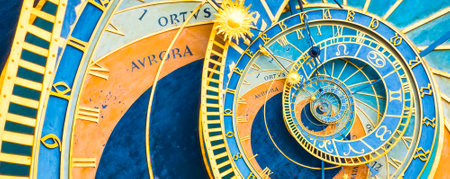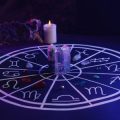Introduction to Animal Totems in Ancient Britain
Among the mist-laden landscapes and rolling hills of ancient Britain, animal totems occupied a central role in the spiritual consciousness of early tribes. Far from mere decorative motifs, these totems represented profound connections between the people and the natural world, acting as both protectors and symbols of tribal identity. The Celts, Picts, and other indigenous groups imbued animals such as the stag, raven, boar, and wolf with rich symbolic meaning, reflecting their environment, values, and cosmological understanding. Through oral traditions and artefacts unearthed from burial sites, we glimpse how these animal figures were woven into rituals, clan emblems, and daily practices. The study of these totems is not only an exploration of symbolism but also a journey into the very heart of how ancient Britons conceived their place within the cosmos—where every creature was a bearer of spiritual power and a marker of communal identity.
2. Celestial Patterns and Their Cultural Importance
For the ancient Britons, the night sky was far more than a passive backdrop; it served as an active canvas upon which myths, agricultural cycles, and community rituals were projected. The observation of celestial phenomena—ranging from the regular phases of the moon to rare solar eclipses—was not simply an act of curiosity but a cornerstone of social structure and spiritual life. These astral patterns, interpreted through a lens steeped in reverence and practicality, informed everything from harvest timing to the veneration of animal totems believed to embody cosmic forces.
Major Celestial Events Observed by Ancient Britons
| Celestial Event | Interpretation | Social/Spiritual Implication |
|---|---|---|
| Winter Solstice | Return of the sun; rebirth and renewal | Feasting and communal gatherings at sites like Stonehenge; reaffirmation of tribal bonds |
| Lunar Eclipses | Intervention of supernatural forces | Rituals for protection or appeasement; association with transformation animals such as owls or wolves |
| Pleiades Rising | Marker for agricultural seasons | Ceremonies invoking fertility and successful harvests; linkage to bovine or avian totems |
| Shooting Stars/Meteors | Messages or omens from deities/ancestors | Interpretive rituals by druids or wise folk; guidance for communal decisions |
The Broader Social and Spiritual Implications
The act of sky-watching became deeply woven into the fabric of daily existence, guiding not only practical undertakings such as farming and navigation but also shaping collective identity and moral codes. Animal totems—like the stag, raven, or boar—were often mapped onto constellations or recurring stellar configurations, linking terrestrial fauna with celestial power. This intersection fostered a worldview in which human actions were perpetually intertwined with cosmic rhythms, nurturing a sense of humility before nature’s grandeur and encouraging communal harmony under the watchful gaze of the heavens.
![]()
3. Animal Totems and Constellations: Symbolic Connections
In the context of ancient British culture, the intricate relationship between animal totems and celestial phenomena was not merely coincidental but deeply woven into the fabric of spiritual and communal life. The people of these isles, attuned to the cycles of nature and the heavens, perceived certain animals as living embodiments of cosmic forces. For instance, the stag—often observed in Bronze Age carvings and Celtic art—was linked with the constellation Orion. This association transcended mere observation; it informed the timing of seasonal rituals, such as solstice ceremonies, where the Stag King represented renewal and celestial order.
Similarly, birds such as ravens or crows were intertwined with constellations like Corvus. Their presence in myth and ritual was believed to bridge the realms of earth and sky, acting as messengers between mortals and divine entities. These symbolic connections found expression in storytelling traditions: epic tales would narrate journeys under star-strewn skies, using animal guides whose real-world habits mirrored those attributed to their celestial counterparts. Such narratives provided both entertainment and moral instruction, reinforcing social cohesion through shared cosmological myths.
It is also noteworthy that these associations were fluid, adapting as astronomical knowledge evolved through cultural contact and observation. The bear, for example—an animal not native to later Britain yet present in earlier pre-Roman lore—remained enshrined in stories connected to Ursa Major. Through this lens, we see how constellations functioned as mnemonic devices within oral tradition, encoding agricultural calendars or navigational cues alongside spiritual meaning.
The ritualistic significance of these connections extended into material culture as well. Artefacts bearing animal motifs often mirrored celestial patterns, suggesting a deliberate alignment between terrestrial craftsmanship and heavenly order. This alignment was most evident during key festivals—Imbolc, Beltane, Samhain—when specific constellations rose or set, marking transitions in both nature and society. Thus, the convergence of animal totems and constellations became a cornerstone of ancient British worldviews, shaping rituals that honoured both earthly creatures and the vast expanse above.
4. Druidic Influence: Intertwining Nature and the Cosmos
The Druids, as the learned priestly caste of ancient Britain, played a pivotal role in the fusion of animal symbolism with celestial observation. Their philosophies were rooted deeply in both reverence for the natural world and acute awareness of astronomical cycles. This intertwining of earthbound totems and cosmic rhythms was not merely spiritual but also practical, guiding agricultural practices and communal ceremonies throughout the year.
Animal Totems as Seasonal Markers
Druidic lore often assigned specific animals to distinct periods within the solar calendar, using their behaviours as portents of seasonal change or as metaphors for celestial events. For instance, the appearance or migration patterns of certain birds could herald the onset of spring, while nocturnal creatures like owls were associated with the mysteries of winter solstice nights.
Table: Druidic Animal Totems and Their Celestial Associations
| Animal Totem | Associated Celestial Body/Event | Seasonal Significance |
|---|---|---|
| Stag | Summer Solstice (Sun at Zenith) | Symbol of virility and renewal; midsummer celebrations |
| Crow | Autumn Equinox (Balance of Day & Night) | Harbinger of transformation; preparation for harvest’s end |
| Salmon | Pleiades Constellation Rising | Wisdom and knowledge; signals time for reflection and lore-sharing |
| Owl | Winter Solstice (Longest Night) | Guardian of hidden knowledge; aligns with introspection and rebirth |
The Ritual Calendar: Observing the Heavens Through Animals
Druidic festivals such as Beltane, Lughnasadh, Samhain, and Imbolc were meticulously timed according to both astronomical phenomena and animal activity. These observances synchronised human life with the broader cycles governing nature and the cosmos. Through such rituals, Druids reinforced a worldview in which earthly creatures served as intermediaries between mortals and celestial powers.
The Enduring Legacy in British Folklore
This profound respect for both fauna and firmament lingers in British folklore today. Myths about wise stags at midsummer or prophetic birds at harvest time echo ancient Druidic teachings that recognised no boundary between nature’s cycles and those mapped by the stars. Thus, through ritual, observation, and storytelling, Druids wove a tapestry where every animal totem was intrinsically linked to the heavens above.
5. Legacy in British Folklore and Vernacular
The enduring resonance of animal totems and their celestial counterparts is woven into the very fabric of modern British folklore, vernacular, and regional traditions. Even as the ancient cosmological frameworks have faded from collective memory, their echoes persist—subtly influencing contemporary customs, expressions, and local identities.
Animal Totems in Modern Folklore
The reverence for animals such as the stag, the raven, and the fox endures in countless British folktales. These creatures are often imbued with characteristics reminiscent of their ancient symbolic roles: the stag as a guide through liminal spaces, the raven as a harbinger or messenger, and the fox as a cunning trickster. Such stories continue to be told around hearths and at community gatherings, particularly in rural England and Scotland, reinforcing a sense of continuity with ancestral beliefs.
Celestial Echoes in Language
British vernacular retains numerous idioms and expressions that allude to both animal symbolism and celestial phenomena. Phrases like “mad as a March hare” or “wise as an owl” are more than colourful turns of phrase—they are linguistic vestiges of ancient wisdom traditions. Additionally, references to starry constellations named after animals—such as “The Plough” (Ursa Major) or “The Swan” (Cygnus)—persist in everyday conversation and children’s rhymes, subtly embedding astronomical knowledge within common speech.
Local Customs and Seasonal Celebrations
Many local festivals throughout Britain still echo ancient rites that honoured animal totems under particular stars or seasons. The Abbots Bromley Horn Dance invokes the power of deer at harvest time; Cornish ‘Obby ‘Oss festivals entwine equine motifs with May Day celebrations; Morris dancers don costumes recalling birds or beasts believed to bridge earth and sky. These rituals serve not merely as cultural curiosities but as living testaments to a worldview wherein the natural world was inextricably linked with the heavens above.
Thus, while scientific rationalism may have reshaped our understanding of nature and cosmos, the legacy of animal totems and their celestial associations endures—manifesting in language, lore, and local practice across the British Isles. This persistent thread connects modern Britons with their ancient forebears, reminding us that beneath our contemporary surface lies a deep-rooted tapestry woven from mythic animals and guiding stars.


